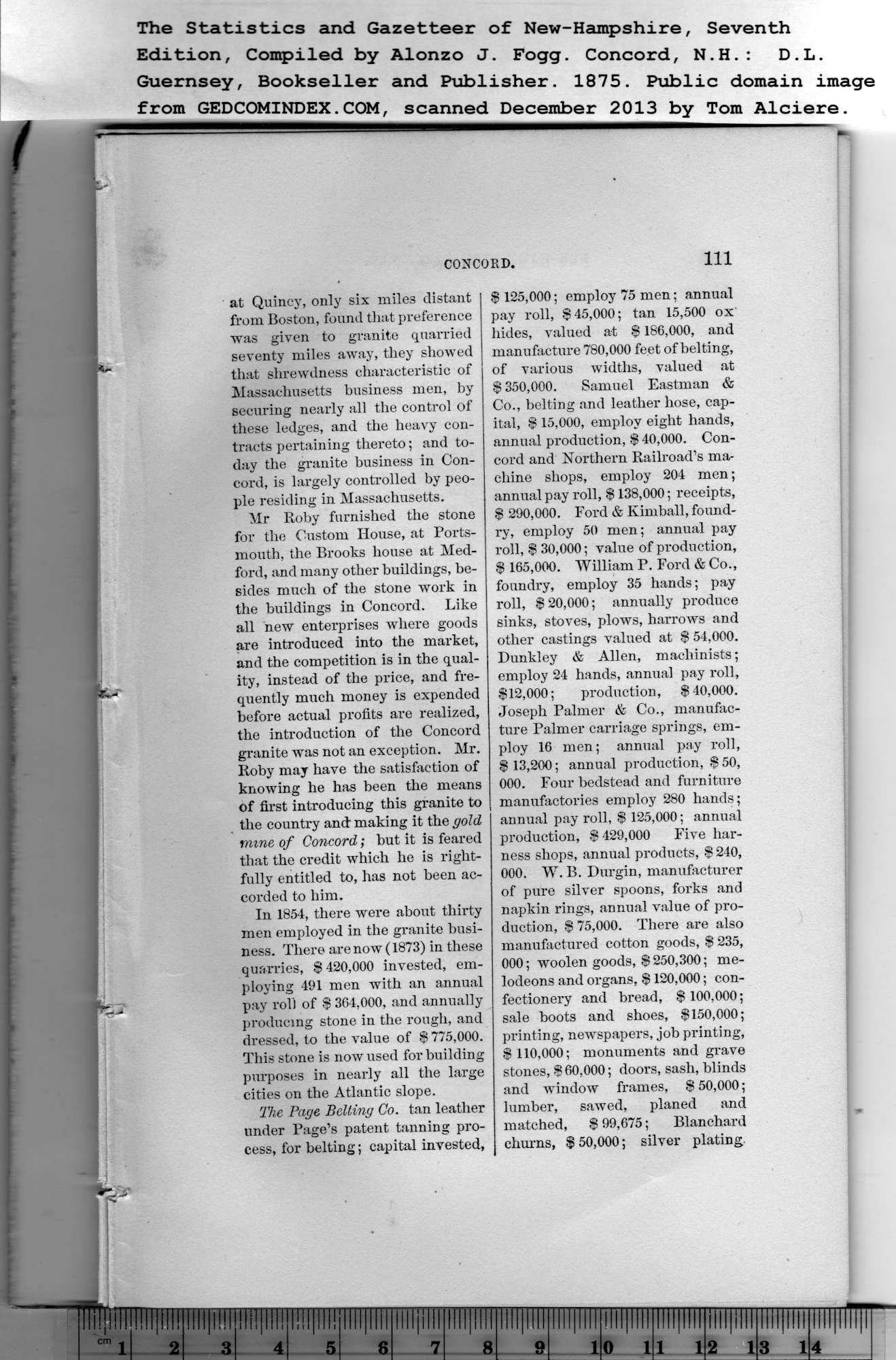|
at Quincy, only six miles distant
from Boston, found that preference
was given to granite quarried
seventy miles away, they showed
that shrewdness characteristic of
Massachusetts business men, by
securing nearly all the control of
these ledges, and the heavy con-
tracts pertaining thereto; and to-
day the granite business in Con-
cord, is lai'gely controlled by peo-
ple residing in Massachusetts.
Mr Roby furnished the stone
for the Custom House, at Ports-
mouth, the Brooks house at Med-
ford, and many other buildings, be-
sides much of the stone work in
the buildings in Concord. Like
all new enterprises where goods
are introduced into the market,
and the competition is in the qual-
ity, instead of the price, and fre-
quently much money is expended
before actual profits are realized,
the introduction of the Concord
granite was not an exception. Mr.
Roby may have the satisfaction of
knowing he has been the means
of first introducing this granite to
the country and making it the gold
mine of Concord; but it is feared
that the credit which he is right-
fully entitled to, has not been ac-
corded to him.
In 1854, there were about thirty
men employed in the granite busi-
ness. There are now (1873) in these
quarries, $420,000 invested, em-
ploying 491 men with an annual
pay roll of $ 364,000, and annually
producing stone in the rough, and
dressed, to the value of $ 775,000.
This stone is now used for building
purposes in nearly all the large
cities on the Atlantic slope. |
The Page Belting Co. tan leather
under Page’s patent tanning pro-
cess, for belting; capital invested,
$ 125,000; employ 75 men; annual
pay roll, $45,000; tan 15,500 ox'
hides, valued at $ 186,000, and
manufacture 780,000 feet of belting,
of various widths, valued at
$ 350,000. Samuel Eastman &
Co., belting and leather hose, cap-
ital, $ 15,000, employ eight hands,
annual production, $ 40,000. Con-
cord and Northern Railroad’s ma-
chine shops, employ 204 men;
annual pay roll, $ 138,000; receipts,
$ 290,000. Ford & Kimball, found-
ry, employ 50 men; annual pay
roll, $ 30,000; value of production,
$ 165,000. William P. Ford & Co.,
foundry, employ 35 hands; pay
roll, $ 20,000; annually produce
sinks, stoves, plows, harrows and
other castings valued at $ 54,000.
Dunkley & Allen, machinists;
employ 24 hands, annua] pay roll,
$12,000; production, $40,000.
Joseph Palmer & Co., manufac-
ture Palmer carriage springs, em-
ploy 16 men; annual pay roll,
$ 13,200; annual production, $ 50,
000. Four bedstead and furniture
manufactories employ 280 hands;
annual pay roll, $ 125,000; annual
production, $ 429,000 Five har-
ness shops, annual products, $ 240,
000. W. B. Durgin, manufacturer
of pure silver spoons, forks and
napkin rings, annual value of pro-
duction, $ 75,000. There are also
manufactured cotton goods, $ 235,
000; woolen goods, $ 250,300; me-
lodeons and organs, $ 120,000; con-
fectionery and bread, $ 100,000;
sale boots and shoes, $150,000;
printing, newspapers, job printing,
$ 110,000; monuments and grave
stones, $60,000; doors, sash, blinds
and window frames, $ 50,000;
lumber, sawed, planed and
matched, $ 99,675; Blanchard
churns, $ 50,000; silver plating. |
